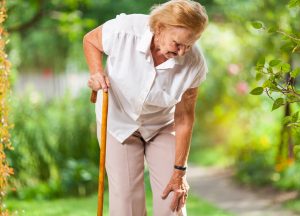 Millions of Americans suffer from arthritic knees, but a new exercise program claims that it can help relieve the pain. Researchers put this new program to the test to find out if the claims are valid.
Millions of Americans suffer from arthritic knees, but a new exercise program claims that it can help relieve the pain. Researchers put this new program to the test to find out if the claims are valid.
The STEP-KOA program (short for stepped exercise program for patients with knee osteoarthritis) starts with gentle exercises at home and if needed, is followed up with twice-monthly phone consultations for three months. If the patients’ pain still does not improve, the patient then moves to step three, which includes in-person physical therapy.
Advertisement
For the study, researchers from the Veterans Affairs Health Care System randomly assigned over 300 patients with painful knee osteoarthritis to either the STEP-KOA program or arthritis education.
Participants in the program were in step one for nine months. Then, 65% of patients progressed to step two, and 35% went on to step three. Participants in the arthritis education group were mailed educational materials every two weeks.
All participants had knee osteoarthritis, which is the most common form of arthritis in the knee. It is a degenerative, “wear-and-tear” type of arthritis.
The study found that compared to participants who received education only, the stepped-care group showed greater pain and function improvement. The authors of the study believe that this strategy could lower health care costs and lead to more tailored programs to patients’ needs.
A Backwards Approach
However, a prominent orthopedic surgeon has a problem with this program, calling the approach backward. He believes that it should start with physical therapy and move on to an at-home program.
Dr. Jeffrey Schildhorn of Lenox Hill Hospital in New York City explains, “It seemed like this study was designed for a style of medicine that I think very few of us would appreciate. It was almost like you’re preparing for a future where there are limited resources, and you try to do everything remotely, and you put the responsibility on the patient.”
Advertisement
When Dr. Schildhorn analyzed the findings, he noted that 90 patients dropped out of the program, and only 10% remained at step one throughout the study.
He believes that each patient’s knee damage and perception of pain is unique, so an effective program should be individually designed. For all patients, the key is to keep the joint moving with gentle exercise. No matter if someone is regularly checking in with a specialist, patients need to take it upon themselves to do their exercises every day.
Millions of Americans suffer from arthritic knee pain, so programs such as the STEP-KOA program need to be made available for patients. With the world changing the way we live, including cutting down on doctor’s visits, exercise programs that are easy to do at home could be the way of the future.
